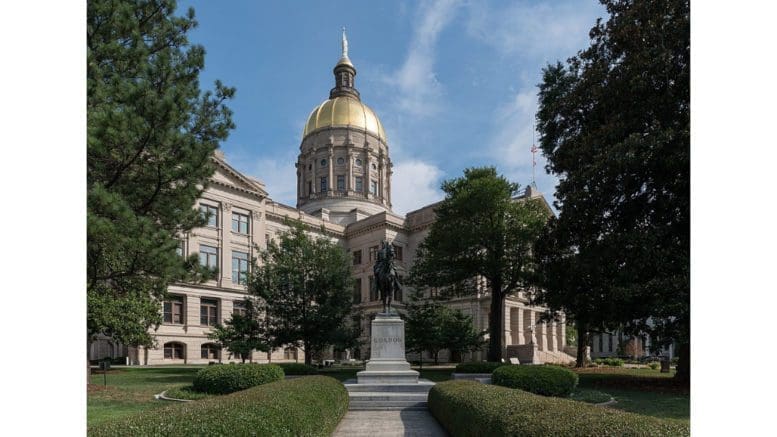by Ross Williams, Georgia Recorder [This article first appeared in the Georgia Recorder, republished with permission]
January 16, 2024
The Georgia House’s No. 2 legislator is calling on the state to use about $100 million in state lottery budget reserve money to help reduce class sizes for the state’s youngest students and boost salaries for their teachers.
“I know, not just anecdotally, but through conversations that the team had with superintendents and with the private providers, that they’re having a very difficult time finding lead teachers and assistant teachers that will take the job and stay in the job for the salary that we offer,” said Speaker Pro Tem Jan Jones, a Milton Republican. “And they’re not only competing with other industries, they’re competing with K-12, where by and large, teachers make more money. They have access to the state retirement system and state health insurance.”
“We’ve got to up our game to continue to offer one of the first universal pre-K system programs in the country, and one that’s certainly very successful,” she added.
On Tuesday, Jones, announced four recommendations she hopes will raise the state’s pre-K program competitiveness using money from the Georgia Lottery’s reserve fund. Her plan has the backing of House Speaker Jon Burns.
The state is required to save half of the prior year’s net lottery proceeds in a rainy day fund, but usually deposits much more than required. In Georgia’s 2023 budget year, the state had $2.2 billion in its lottery reserves, about $1.4 billion of which was in an unrestricted fund, according to the Georgia Early Education Alliance for Ready Students.
Reduced Class Sizes
When it started in 1992, Georgia’s pre-K program funded 20 students per class, but that number was increased to 22 in 2012 as the Great Recession’s effects lingered to meet declining lottery revenues. Getting back to 20 kids per class should be the state’s top early education priority, Jones said.
To meet that number, Jones’ plan calls for increasing the number of pre-K classrooms in the state from 3,818 to 4,200 and carries a price tag of just under $43 million over four years.
Lower class sizes are associated with better learning, and those with experience wrangling four-year-olds know that just two fewer students in a classroom can make a big difference, said Amy Jacobs, commissioner of the Georgia Department of Early Care and Learning.
“Teachers say to me, two children not showing up, being absent, it’s a huge difference in that interaction, the instruction they can get, the individualized instruction they can give to these students, it’ll be a huge game changer for pre-K,” she said.
Smaller class sizes will also give teachers incentive to consider a career in pre-K instead of elementary school, Jones said.
“It also affects the particular question of workforce because for a teacher with the same credentials, it’s going to be a greater burden on the pre -K teachers by asking them to have a larger class size than a kindergarten classroom,” she said.
Higher Salaries
Kindergarten teachers often typically take home a bigger paycheck as well, and Jones’ plan calls for greater parity in salary between pre-K and K-12 teachers.
Jones’ plan would revise the base salary and raise schedule for pre-K teachers to align with the salary schedule for K-12 teachers at an annual cost of $4.6 million.
Assistant teachers would see a raise from $20,190 to $25,741 with adjustments to assistant teacher pay benchmarked to the average K-12 paraprofessional salary. This recommendation would cost $26.2 million.
“We can’t do pre-K without teachers and we have a dedicated group of Georgia pre-K teachers, but we do have to look at salary,” Jacobs said. “We’ve made some really good adjustments in the past few years where they’re very close to K-12, but anything we can do to get exact parity with K-12 will make a huge difference in recruiting and retaining them in our Georgia pre -K classes.”
Other Costs
Jones said the state has not updated its share of funds for much of pre-K spending in decades.
The current pre-K formula provides $8,000 per classroom for start-up grants to new or expanding providers, an amount which has not been updated since 2004.
Jones calls for that grant to increase to $30,000 per classroom, with a rotating $15,000 grant to refresh each classroom every five years. Those two initiatives combined would cost about $13.4 million per year.
The current plan funds transportation at $16.50 for each low-income student, while Jones’ plan calls for funding transportation at $80.78 per student for all students at an annual cost of $4 million.
Georgia Recorder is part of States Newsroom, a network of news bureaus supported by grants and a coalition of donors as a 501c(3) public charity. Georgia Recorder maintains editorial independence. Contact Editor John McCosh for questions: info@georgiarecorder.com. Follow Georgia Recorder on Facebook and Twitter.

